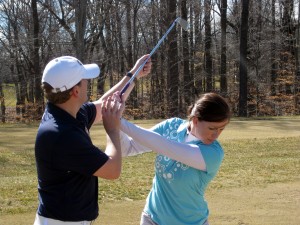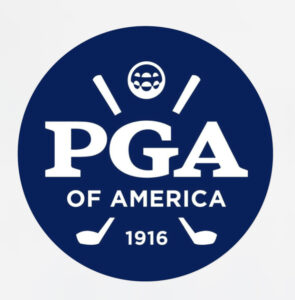My general feeling on instruction is that if a student has a decent base of a swing and I can work with them to improve on that swing, I will do that. It’s difficult sometimes to do anything more than because so many people want the fix “right now” and don’t have the time to commit to working on more detailed swing fixes. So I work with them to get a feel for a certain move and a sense of how to incorporate it into their games so that they can play better right away.
However, sometimes the battle between working on a “feel” and working on improving fundamental positions in the swing comes up, and as a teacher you have to understand how best to help your student and know how committed they will be to it. Having a good feel for a swing is one thing, but there are times where this approach will not work, and I adjust to this situation and get more detailed.
I had a student this weekend that was a perfect example. He plays rarely, but has a tournament coming up and wants to hit the ball decent so that he can enjoy the day and contribute. This student would like to play more going forward as well, which is good information to have since there may be better commitment on his part to practice if he does keep playing more frequently. In watching his swing, it was clear that a basic “feel” would not work; the ball would fly (even with a short club) hard left in a big time hook, and many shots would be hit well behind the ball. The club face was very closed in the back swing due to improper rotation of the face going back, so I knew there was no “feel” way out of this one – we had to work on fundamental positions.
I began by working with the student to get the club parallel to the ground going back with the toe of the club pointing to the sky; in his previous move, he would never rotate the club and it would face the ground. This is what the great teacher Jim McLean would refer to as a “death move” – a place you simply can’t come back from in the swing. I had alignment sticks on the ground and had him swing back parallel to the ground, get the toe of the club up in the air, swing through hitting a short shot, and then follow through with the toe of the club pointing in the air and his arms extended in the follow through. Boom – immediate results, as the ball flew straight and was struck solidly. In all of his years of playing, he never had been able to get this hook fixed, but a simple positional drill was the cure.
We then progressed to half swings concentrating on the club face position, as well as a good follow through onto his left side, and the results were really great. Best of all, I got the student to really smile and enjoy the game more than ever, which is really gratifying for a teacher.
So the moral of the story is this: if I can work within the framework of your current swing and give you results that will be consistent, I will do it. But if that swing is fundamentally flawed, be prepared to do the fundamental work necessary to fix it for the long term. It may be a bit tougher, but I guarantee you it will be worth it when you see those shots fly straight and true right at the target.




